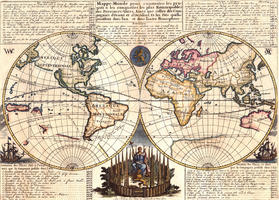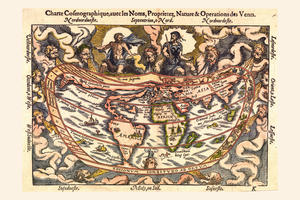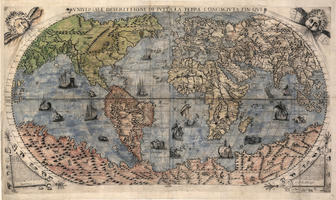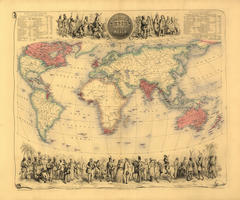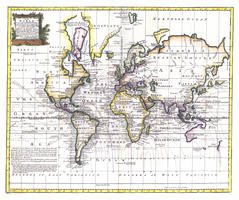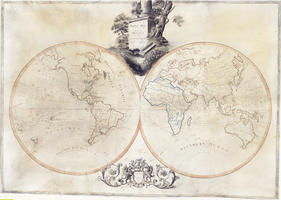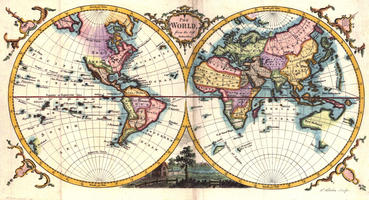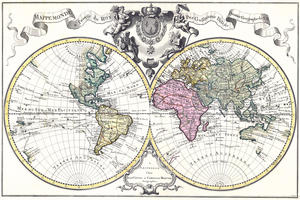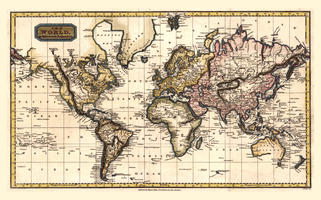Historic World Maps from our collection were made between 1500 and 1900 and show how one saw the world at the time. In the last centuries, cartographers had a preference for the Globular projection. All maps from that time are also marked by the absence of country borders. The so-called nation state came into force only in the late 18th century.
You are here
Historic maps
-
20,-In cart
- • Map of the world in hemispheres surrounded by text blocks
-
20,-In cart
- • Contains beautiful miniature drawings of ships, animals, mythical figures
-
20,-In cart
- • Striking are the miniature drawings of boats, animals and other figures
-
20,-In cart
- • With table listing the British possessions in all parts of the world
-
20,-In cart
- • The map describes very detailedly coastal areas of the continents
-
20,-In cart
- • Beautiful map in neutral colours with a sketchy character
-
20,-In cart
- • A very colourful and beautifully decorated world map in hemispheres
-
20,-In cart
- • Betutiful title with ornaments in black and white
-
20,-In cart
- • The original is painted with watercolour - dark on the edges, lighter on the inside
Pages
Color Usage
All cards are displayed in their original colors. For most maps, from the period 1500-1800, there are no separate colors for each country, but for the continents. Exception to this is Johannes de Ram's map from 1683.
Projections
Depending on function and / or taste, many people choose the Gall or Mercator projection. These projections are different ways to project the surface of a round planet on a flat plane. However, since projecting the surface of a round-body body on a flat surface can never be reproduced simultaneously and surface-wise, any type of map projection is different in nature and function.
- Globular projection (see map, from 1684): Both halves of the globe are displayed on two separate circles.
- Winkel Projection (See Map, from 1528): Surface of the World has been projected on an oval-shaped map.
- Mercator projection (see eg 1808 map): shapely map, but less surface accurate. Northern and Southern hemispheres are stretched in width and height relative to the area around the equator. But the most popular map projection, even used by Google.
